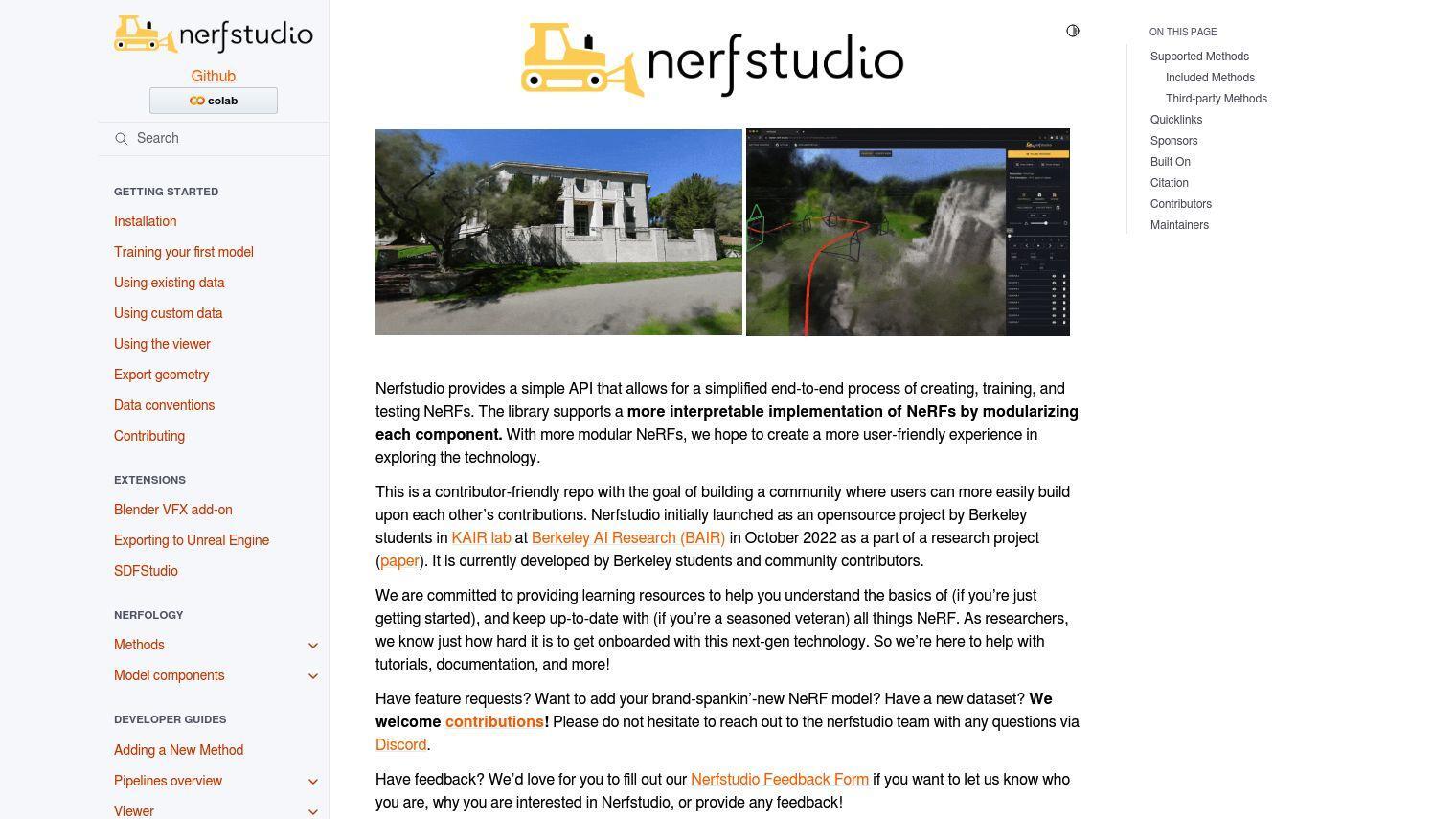Nerfstudio offers a simplified API for creating, training and testing NeRFs (Neural Radiance Fields). By breaking down each component into modules, Nerfstudio hopes to make it easier for people to explore the technology.
Nerfstudio supports several built-in NeRF methods, including Nerfacto, Instant-NGP, NeRF, Mip-NeRF, TensoRF and Splatfacto. It also can incorporate third-party methods, including BioNeRF, Instruct-NeRF2NeRF and others.
Among Nerfstudio's features are:
- Modular NeRF Implementation: Makes it easier to create and customize NeRF models.
- Eager Community Contributions: Encourages people to contribute their own methods and models, with instructions on how to do so.
- Learning Resources: Includes tutorials, documentation and interactive notebooks to learn about NeRF technology.
- Config System: Makes it easy to configure models and training processes.
- Library for Accelerating NeRF Renders: Optimizes rendering performance.
Nerfstudio can be used for everything from basic NeRF exploration to advanced research and development. The library also offers learning resources to help onboard people of all skill levels.
The project is open-source and welcomes contributions, so anyone can help develop the library and contribute to its future. That collaborative ethos is designed to make NeRF technology more accessible and easier to use.
Nerfstudio's documentation is divided into three categories: getting started, deeper explanations of the technology, and developer documentation. That should help people find what they need depending on how much they know.
Nerfstudio itself is free to use, but you'll need a compatible environment with Python 3.8 or later and some required libraries like PyTorch and CUDA. Installation involves setting up a conda environment and installing the required packages.
If you're interested in using Nerfstudio, the project offers some resources, including quick start guides, tutorials and a feedback form. Nerfstudio can be run from a command line interface or from a Docker image, so you can use it the way you like.
Because Nerfstudio is community maintained, it should stay fresh and relevant, with active development and support from those who contribute.
Published on June 14, 2024
Related Questions
Tool Suggestions
Analyzing Nerfstudio...

